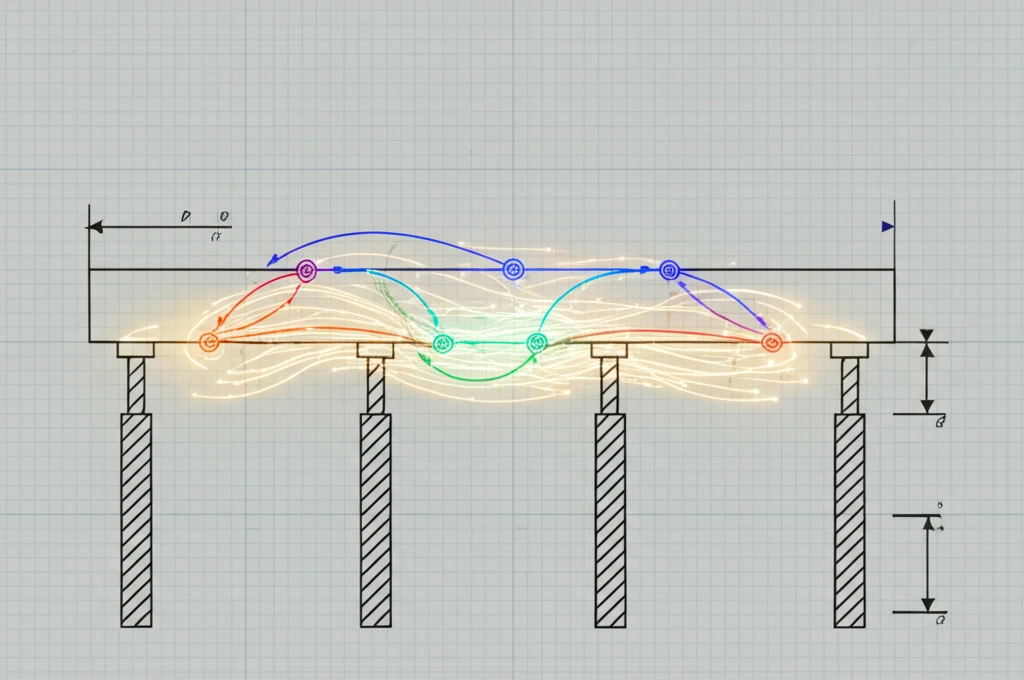
Mastering Structural Analysis: A Practical Guide to the Method of Three Moments
"Unlock the secrets of statically indeterminate beams and continuous structures with this comprehensive breakdown of the three moments equation."
Structural analysis is a cornerstone of civil engineering, essential for ensuring the safety and stability of buildings, bridges, and other infrastructure. Among the various techniques available, the Method of Three Moments stands out as a powerful tool for analyzing statically indeterminate beams and continuous structures. This method, rooted in the principles of structural mechanics, allows engineers to determine internal moments at supports, enabling a comprehensive understanding of structural behavior under load.
The Method of Three Moments, also known as Clapeyron's theorem, provides a systematic approach to solving complex structural problems. Unlike statically determinate structures, where equilibrium equations alone suffice, indeterminate structures require additional compatibility conditions to account for support settlements and continuous spans. This is where the three moments equation shines, offering a way to relate moments at adjacent supports, thereby simplifying the analysis.
This article aims to demystify the Method of Three Moments, providing a step-by-step guide to its application. Whether you are a student, a practicing engineer, or simply someone curious about structural mechanics, this resource will equip you with the knowledge and skills to tackle indeterminate beam analysis effectively. We'll break down the theory, illustrate practical examples, and highlight key considerations, making this powerful technique accessible to all.
What is the Method of Three Moments and Why Does It Matter?

The Method of Three Moments, or Clapeyron's Theorem, is a structural analysis technique used to determine the internal moments at the supports of continuous beams. Continuous beams are those that span across multiple supports, making them statically indeterminate. This means that the equations of static equilibrium (sum of forces and moments equal to zero) are insufficient to solve for all the unknown reactions and internal forces.
- Analyzing Indeterminate Structures: It provides a means to analyze structures where static equilibrium equations alone aren't enough.
- Accounting for Support Settlements: It can incorporate the effects of support settlements, which are crucial for real-world structures.
- Understanding Continuous Spans: The method allows engineers to understand the behavior of beams that span multiple supports, providing a more accurate assessment of structural integrity.
Ready to Master the Method of Three Moments?
The Method of Three Moments is a vital tool in the arsenal of any structural engineer or civil engineering student. By understanding its principles and applications, you can unlock the ability to analyze complex structural systems and ensure the safety and stability of designs. Whether dealing with bridges, buildings, or other infrastructure, the ability to accurately determine internal moments is paramount. So, embrace the challenge, delve into the equations, and master the Method of Three Moments – a cornerstone of structural analysis.
